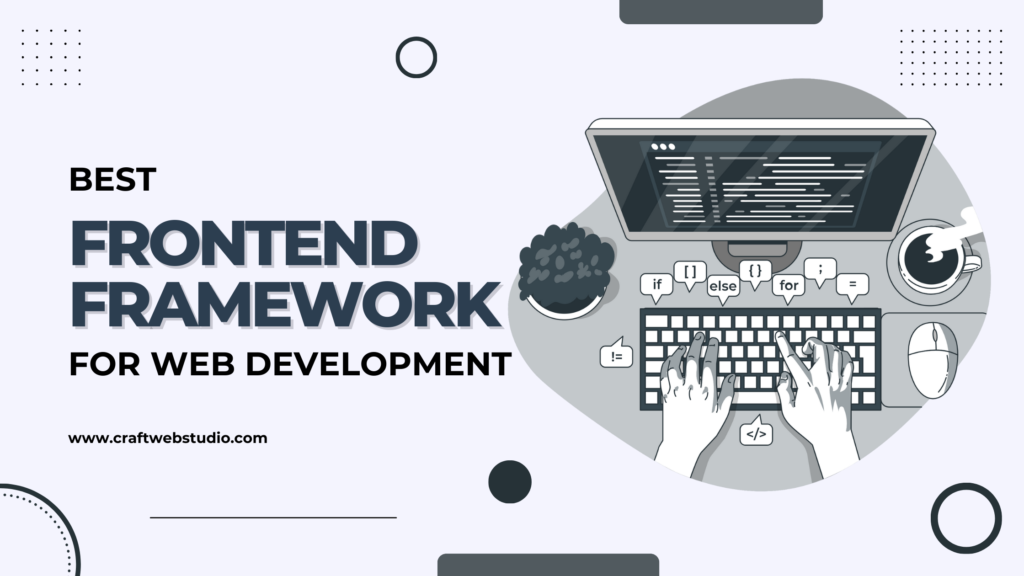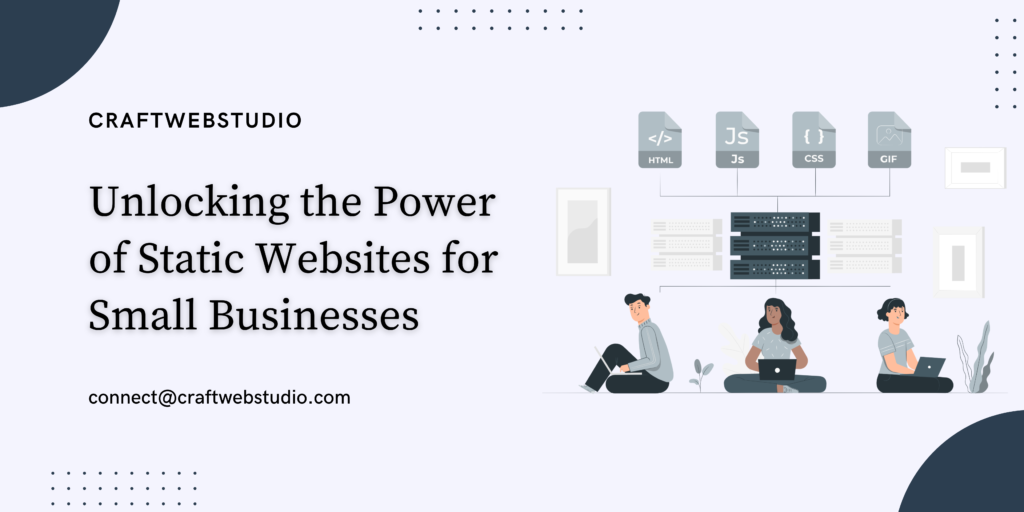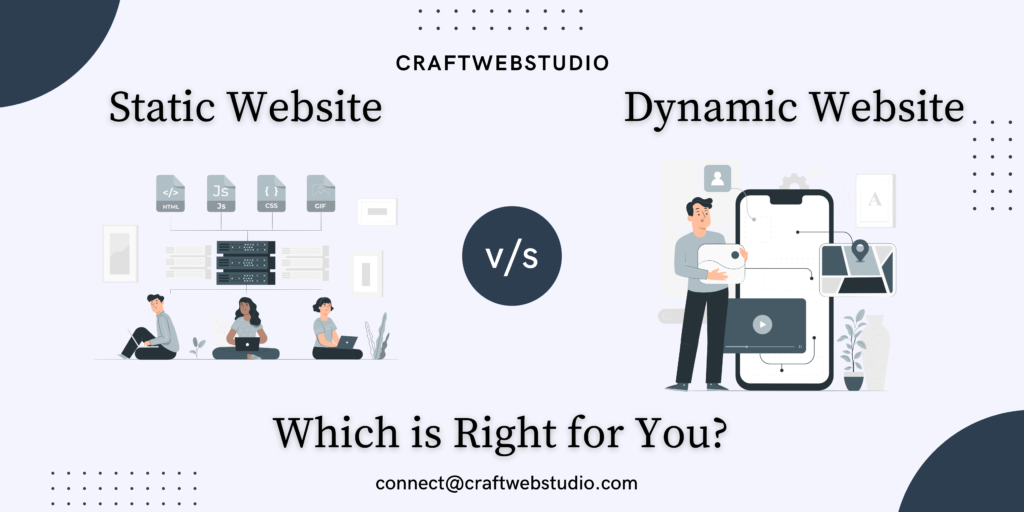In today’s competitive digital landscape, user experience stands as the forefront priority for businesses looking to make a mark in the market. As a developer, the emphasis on creating a seamless user interface that is both powerful and simple cannot be overstated.
With the ever-increasing demands of customers and the market, the quest for enhancing usability and functionality remains constant. This pursuit often leads businesses and developers to seek out the best frontend frameworks that can elevate their web development projects to new heights. The right choice of frontend framework can make all the difference in delivering a stellar user experience that resonates with the target audience.
In this blog, we delve into some of the top frontend frameworks that are set to define web development trends in 2024. Whether you are a developer looking to stay ahead of the curve or a business eager to enhance your online presence, our recommendations will help you navigate the landscape of frontend frameworks with confidence.
What is a Frontend Framework?
In the realm of web development, the frontend of a website or web application encompasses all the visible components that users interact with, including the layout, graphics, navigation, typography, and overall design elements. A frontend framework serves as a comprehensive set of tools and resources that empower developers to efficiently create and enhance the frontend of their applications.
Essentially, a front-end framework acts as a foundational structure or scaffolding upon which developers can seamlessly construct and design the user interface of their applications. With frontend frameworks at their disposal, developers can leverage ready-to-use components to enhance the user experience of their websites and web applications.
By harnessing the power of frontend frameworks, developers can expedite the development cycle, improve efficiency, and create visually appealing and user-friendly interfaces that align with the evolving demands of the digital landscape.
Type of applications you can create with it
Frontend frameworks are essential tools to create a diverse range of web applications that cater to user preferences. They excel in building Single Page Applications (SPAs) like React, Angular, and Vue.js, delivering fast and interactive user interfaces.
For social networking sites, frameworks such as React and Angular facilitate real-time updates and personalized user experiences. Additionally, frameworks like Vue.js and Angular are instrumental in designing dynamic and visually appealing dashboards for data visualization and analytics.
Choosing the Best Front-End Framework: Key Factors
When it comes to selecting the most suitable frontend framework for web development, you need to consider several key factors to ensure optimal performance, scalability, and user experience. By evaluating these critical factors, you can make an informed decision when shortlisting the most used frontend frameworks for your projects.
- Performance: One of the primary considerations when choosing a frontend framework is its performance capabilities. Developers should assess factors such as rendering speed, efficiency in handling complex UI components, and overall responsiveness to deliver a seamless user experience.
- Scalability: Scalability plays a crucial role in determining the longevity and adaptability of a frontend framework. Consider the framework’s ability to handle increasing amounts of data, features, and users without compromising performance. Frameworks like Angular and React offer robust scalability features that make them ideal for large-scale applications.
- Community Support: The strength of the community surrounding a frontend framework can significantly impact its adoption and long-term viability. Developers should assess the size, activity, and responsiveness of the community for ongoing support, resources, and updates. Frameworks with active communities, such as React and Angular, often provide valuable resources and assistance to developers.
- Ease of Learning and Adoption: For developers looking to streamline the development process, the ease of learning and adoption of a frontend framework is crucial. Consider the framework’s documentation, learning curve, and available resources to ensure a smooth transition for your development team. Frameworks like Vue.js and React.js are known for their beginner-friendly nature and comprehensive documentation.
1. React
React, a frontend framework developed by Facebook, has emerged as a leading solution for building dynamic user interfaces and interactive web applications. Initially created to address the need for a more efficient and maintainable way to develop frontend components, React introduces a virtual Document Object Model (DOM) for optimizing performance and enhancing user experience. With a focus on component reusability and scalability, React simplifies the process of creating complex user interfaces by breaking them down into manageable and reusable parts.
Pros
- Reusability of components promotes collaboration and efficiency in development.
- Virtual DOM ensures consistent and seamless performance for user interfaces.
- React hooks offer a modern alternative to class-based component structure.
- Advanced development tools like React DevTools enhance debugging and optimization capabilities.
Cons
- Keeping up with frequent framework updates can impact documentation and learning curve.
- JSX syntax complexities may present challenges for developers new to React.
- Limited to frontend solutions, requiring integration with backend frameworks for full-stack development.
When to use React
React is best suited for projects that prioritize building interactive user interfaces, particularly for single-page applications and Progressive Web Applications (PWAs). Its component reusability and efficiency in managing complex UI elements make it an ideal choice for developers looking to create dynamic and responsive web experiences.
When not to use React
Developers with limited experience in JavaScript or those seeking a simpler frontend framework may find React’s learning curve challenging. Additionally, if the project requirements extend beyond frontend development and require robust backend functionalities, considering a full-stack framework may be more suitable than using React alone.
Used by
Netflix, PayPal, Uber, Groupon, Microsoft, Walmart, Facebook, eBay, LinkedIn, Google, etc.
2. Angular
Angular, a frontend framework developed by Google, stands out as a robust platform for creating dynamic web applications with advanced features and functionalities. Originally conceived to address the challenges of building complex and interactive web applications, Angular provides a structured and comprehensive approach to frontend development. By offering a complete solution for building client-side applications, Angular empowers developers to design scalable and maintainable projects that meet the demands of modern web development.
Pros
- Structured architecture enables organized and maintainable codebase.
- Two-way data binding simplifies data synchronization between components.
- Dependency injection mechanism enhances modularity and code reusability.
- Comprehensive testing support with Angular testing utilities for efficient development.
Cons
- Steep learning curve for beginners due to complex concepts and coding conventions.
- Strict adherence to Angular’s architecture and best practices may limit flexibility in certain scenarios.
- Larger file sizes compared to other frontend frameworks, potentially impacting page load times.
- Regular updates and changes in Angular versions may require frequent code adjustments.
When to use Angular
Angular is ideal for projects requiring a robust and scalable frontend solution, particularly for enterprise-level applications and complex web interfaces. Its structured architecture and extensive feature set make it well-suited for developing applications with intricate data flows and interactive components.
When not to use Angular
Developers seeking a lightweight or more flexible frontend framework may find Angular’s strict conventions and learning curve challenging. If the project focuses on rapid prototyping or requires a simpler solution for smaller-scale applications, exploring other frontend frameworks with less complexity and overhead may be more suitable than opting for Angular.
Used by
Forbes, Xbox, Blender, Gmail, Upwork, PayPal, Microsoft Office, Deutsche Bank, Santander, etc.
3. Vue.js
Vue.js, a front-end framework maintained by an open-source community, offers a progressive and lightweight solution for building interactive user interfaces and single-page applications. Developed to provide a flexible and approachable framework for frontend development, Vue.js combines the best features of other popular frameworks while offering a simpler learning curve and easy integration into existing projects. With its intuitive syntax and modular architecture, Vue.js enables developers to create dynamic and responsive interfaces with ease. Despite its lightweight nature, Vue.js remains powerful and versatile, catering to a wide range of web development needs.
Pros
- Intuitive and beginner-friendly syntax facilitates quick learning and adoption.
- Lightweight framework with minimal setup requirements for fast project development.
- Two-way data binding and component-based architecture promote code reusability and maintainability.
- Versatile ecosystem with a rich collection of plugins and libraries for extending functionality.
Cons
- Smaller community compared to other frontend frameworks may limit available resources and support.
- Limited scalability for large-scale applications compared to more established frameworks like React and Angular.
- Rapid evolution of the framework may require developers to stay updated with frequent changes and updates.
When to use Vue.js
Vue.js is an excellent choice for developers seeking a flexible and user-friendly framework for building responsive user interfaces and single-page applications. Its simplicity and ease of use make it ideal for rapid prototyping, small to medium-sized projects, and scenarios where quick development turnaround is essential.
When not to use Vue.js
Projects requiring extensive scalability and complex architectural patterns may find Vue.js limitations compared to more established frameworks like React or Angular. Additionally, developers looking for a large and robust community support system may prefer frameworks with a more extensive user base.
Used by
Netflix, Facebook, Grammarly, Trivago, GitLab, Xiaomi, Adobe, Alibaba, Reuters, Nintendo, etc.
4. jQuery
jQuery, a popular JavaScript library, revolutionized frontend web development by simplifying DOM manipulation, event handling, and AJAX interactions. Developed to address cross-browser compatibility issues and streamline client-side scripting, jQuery quickly gained widespread adoption and became a go-to tool for web developers. With its concise syntax and extensive collection of plugins, jQuery enables developers to enhance user experience, create dynamic web content, and perform common tasks with ease. Despite the rise of modern frontend frameworks, jQuery remains relevant for projects requiring quick implementation of interactive features and compatibility with older browsers.
Pros
- Simplifies DOM manipulation and event handling for more efficient web development.
- Cross-browser compatibility ensures consistent behavior across different browser environments.
- Extensive library of plugins and utilities for adding interactive elements and enhancing user experience.
- Lightweight library with a small footprint, ideal for projects where performance is a concern.
Cons
- Direct manipulation of the DOM can lead to code maintenance challenges and potential performance issues.
- Limited scalability for complex and large-scale applications compared to modern frontend frameworks.
- Dependency on JavaScript may require additional effort to manage compatibility with newer frontend technologies.
When to use jQuery
jQuery is well-suited for projects that require quick and straightforward implementation of interactive elements, animations, and AJAX interactions. Its ease of use and broad browser support make it a valuable tool for enhancing user experience in websites and web applications.
When not to use jQuery
For projects focusing on building modern, single-page applications with complex data handling and state management, using more advanced frontend frameworks like React, Angular, or Vue.js may offer better scalability and maintainability. Additionally, as newer web technologies continue to evolve, the need for jQuery may diminish in favor of more robust and modern solutions.
Used by
Twitter, Bank of America, Uber, Twitter and JPMorgan Chase.
5. Svelte
Svelte, a relatively new front-end framework, distinguishes itself by shifting the paradigm of traditional frontend development. Unlike frameworks that run in the browser and interpret code at runtime, Svelte compiles components into highly optimized JavaScript at build time, resulting in smaller bundle sizes and faster performance. Developed with a focus on simplicity and efficiency, Svelte aims to streamline the process of building reactive web applications by eliminating the need for complex frameworks and runtime libraries. With its innovative approach to reactive programming and component-based architecture, Svelte offers a refreshing alternative for developers looking to create fast, lightweight, and maintainable web applications.
Pros
- Compiles components at build time for optimized performance and reduced bundle sizes.
- Simple and intuitive syntax that promotes rapid development and easy learning curve.
- Reactive programming model simplifies state management and ensures efficient updates.
- Built-in transitions and animations for creating dynamic user interfaces with minimal effort.
Cons
- Limited ecosystem and community support compared to more established frontend frameworks.
- Relatively new framework with evolving features and potential changes in future versions.
- Requires a build step for compiling components, which may add complexity to the development workflow.
When to use Svelte
Svelte is an excellent choice for developers seeking a lightweight and performant framework for building reactive web applications with minimal overhead. Its innovative compilation approach and focus on efficiency make it ideal for projects that prioritize speed, simplicity, and optimized bundle sizes.
When not to use Svelte
Projects requiring extensive ecosystem support, complex state management solutions, or compatibility with a wide range of plugins and libraries may find Svelte’s ecosystem limitations challenging. Additionally, developers accustomed to traditional frontend frameworks with runtime interpretations may need to adjust their development approach when transitioning to Svelte.
Used by
Philips BlueHive, Cashfree, Chess, Godaddy, HealthTree, Rakuten, Razorpay.
Conclusion
In conclusion, selecting the right front-end framework is crucial for web development projects to ensure optimal performance, user experience, and scalability. The landscape of front end frameworks continues to evolve, with options like React, Vue.js, Svelte, and jQuery offering unique features and benefits for developers.
Considering the current trends in web development, it is evident that frontend frameworks play a vital role in shaping the digital experiences of users. By choosing the most suitable front end framework, developers can streamline development processes, enhance interactivity, and create visually appealing interfaces that meet the demands of modern web applications.




